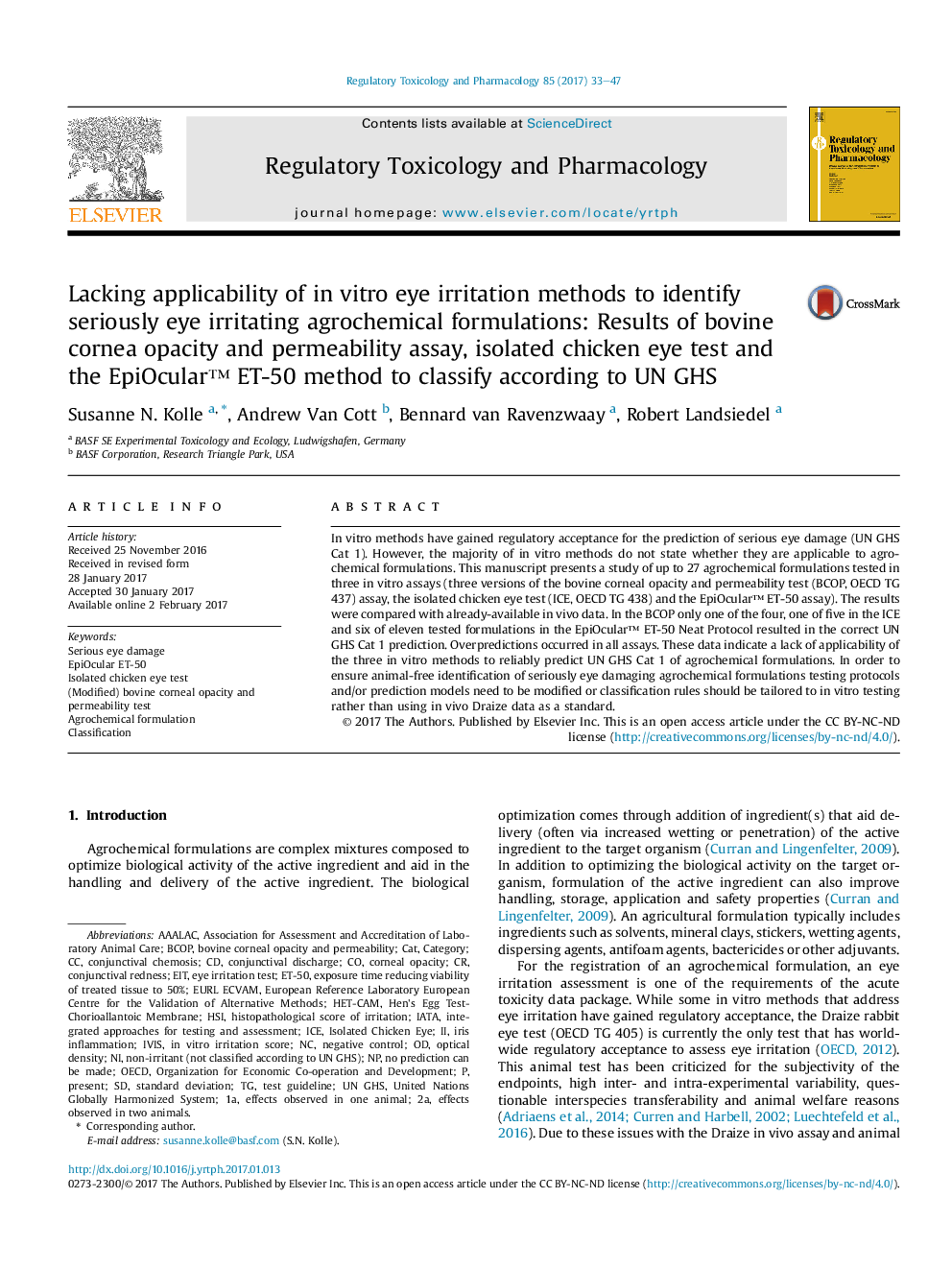| Article ID | Journal | Published Year | Pages | File Type |
|---|---|---|---|---|
| 5561385 | Regulatory Toxicology and Pharmacology | 2017 | 15 Pages |
Abstract
In vitro methods have gained regulatory acceptance for the prediction of serious eye damage (UN GHS Cat 1). However, the majority of in vitro methods do not state whether they are applicable to agrochemical formulations. This manuscript presents a study of up to 27 agrochemical formulations tested in three in vitro assays (three versions of the bovine corneal opacity and permeability test (BCOP, OECD TG 437) assay, the isolated chicken eye test (ICE, OECD TG 438) and the EpiOcular⢠ET-50 assay). The results were compared with already-available in vivo data. In the BCOP only one of the four, one of five in the ICE and six of eleven tested formulations in the EpiOcular⢠ET-50 Neat Protocol resulted in the correct UN GHS Cat 1 prediction. Overpredictions occurred in all assays. These data indicate a lack of applicability of the three in vitro methods to reliably predict UN GHS Cat 1 of agrochemical formulations. In order to ensure animal-free identification of seriously eye damaging agrochemical formulations testing protocols and/or prediction models need to be modified or classification rules should be tailored to in vitro testing rather than using in vivo Draize data as a standard.
Keywords
Isolated Chicken Eye testIVISCATEURL ECVAMBCOPEITHSIOECDAAALACUN GHSHET-CAMEye irritation testAssociation for Assessment and Accreditation of Laboratory Animal Carestandard deviationPresentBovine Corneal Opacity and PermeabilityCategorytest guidelineOrganization for Economic Co-operation and DevelopmentClassificationisolated chicken eyeoptical densitycorneal opacitynegative controlIATAIce
Related Topics
Life Sciences
Environmental Science
Health, Toxicology and Mutagenesis
Authors
Susanne N. Kolle, Andrew Van Cott, Bennard van Ravenzwaay, Robert Landsiedel,
